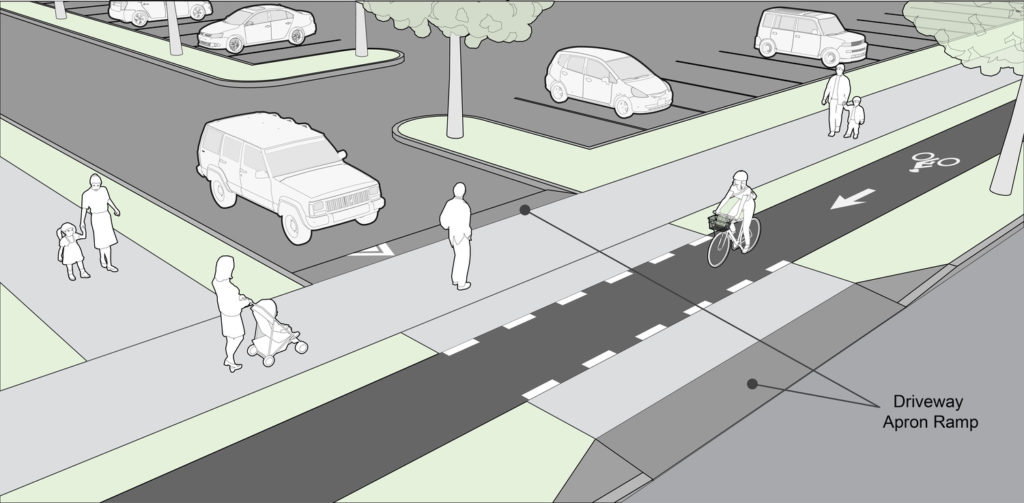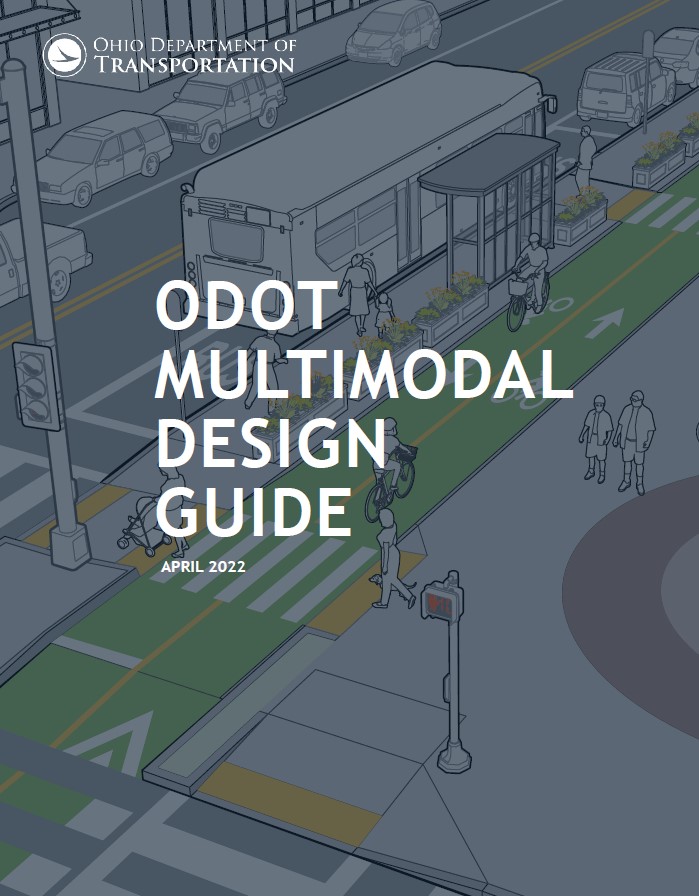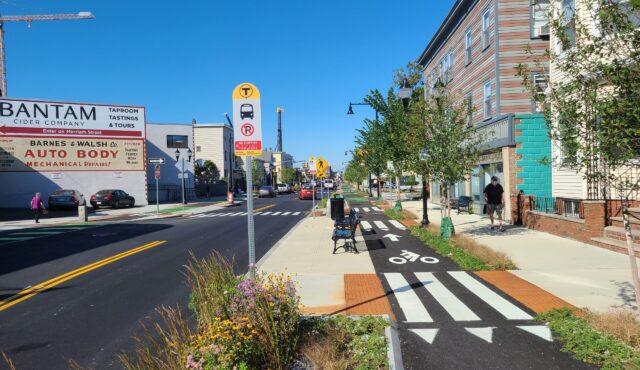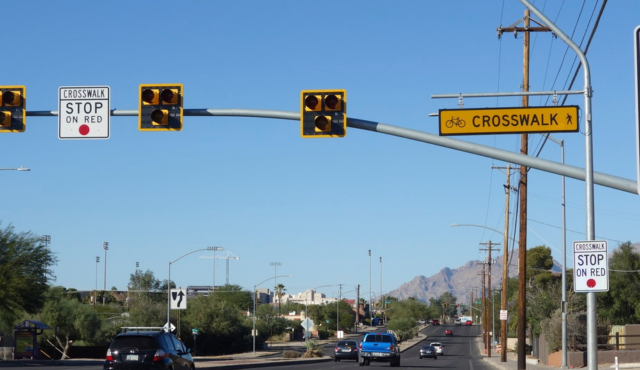In April, the Ohio Department of Transportation (ODOT) released its first Multimodal Design Guide (MDG). Authored in partnership with Toole Design, the Guide is one of the first in the country to cover a variety of modes, most notably walking and bicycling. The MDG’s practical applications for designing separated bike lanes, protected intersections, roundabouts, and more will help communities across Ohio and nationwide to plan and design transportation networks for users of all modes.
Ohio has been taking steps toward a safer and more robust active transportation system for many years, including the development of their Walk.Bike.Ohio. plan and the active transportation focus in the Strategic Highway Safety Plan. Notably, Ohio has also designated more miles of the U.S. Bike Route System than any other state. While their approach has been working in local communities and at the statewide level, ODOT has also been supporting a variety of state and local transportation plans to determine priorities and best practices. With planners, engineers, advocates, and community members in need of up-to-date guidance, it was time for ODOT to create a comprehensive resource to be used throughout the State.
The new Ohio MDG is that comprehensive resource, and it aligns with ODOT’s vision, mission, and goals related to walking and bicycling. Toole Design’s Jeremy Chrzan, PE, PTOE, LEED AP, and Mariel Colman, PE, AICP led the consulting side of the project, in close collaboration with ODOT staff members and transportation professionals from around Ohio, and with support from subconsultant Burgess and Niple. ODOT will use the MDG on all state-owned facilities to provide uniformity across the State’s multimodal transportation system. Beyond Ohio, the Guide is available to any community working to improve their active transportation network and meet the needs of all roadway users. Ohio’s MDG currently stands as the best state-of-the-practice guide to bikeway design, and much of the new content is likely to be included in the next edition of the AASHTO Guide for the Development of Bicycle Facilities.
Read on for highlights from the new Guide, and stay tuned for 101- and 201-level trainings offered by ODOT later this year.
PEEK INSIDE THE GUIDE
The ODOT MDG makes a number of significant contributions to the state of multimodal design practice. It brings together previously separate modal considerations, and it features previously unpublished technical specifications. Here are a few of the highlights:
- Rural and urban considerations: Ohio, like all states, has many types of communities and levels of government. This MDG is written to serve rural and urban communities as well as projects connecting regional active transportation networks. The Guide also addresses a broader, more inclusive range of users than previous guidance with its emphasis on people of all ages and abilities.
- Truly multimodal: While the Guide does focus on active transportation, it recognizes the importance of connections with other modes. It includes sections on connecting with transit and off-street shared use paths, and transitions between each of these. The MDG also focuses on roadway design features to address motorist speeds where street users are likely to mix or conflict.
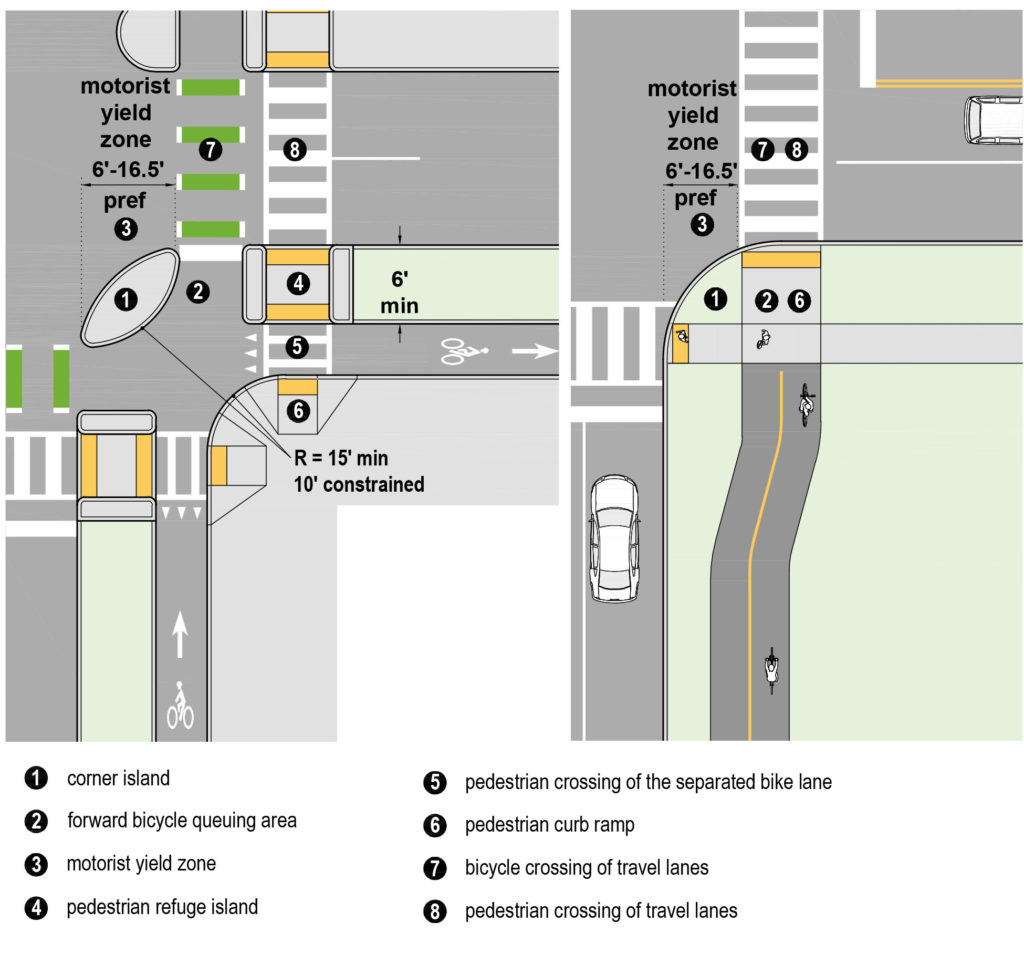
- Never-before-seen guidance: The MDG includes guidance for a variety of traffic calming measures, including roundabouts and new guidance on raised crossings. We know these features are important for low-stress and safe systems, and now communities have access to clearer guidelines for designing and implementing them within active transportation networks. The Guide also includes chapters on signals, interchanges, and railroad crossings, which cover some topics not previously published in guidance form.
- Real-world advice for real-world projects: Planners and engineers alike will benefit from the practical information in the MDG. It is written in a way that will help each discipline understand the other. Additionally, it includes realistic advice on how to identify bike and pedestrian infrastructure opportunities and scope projects effectively to incorporate those aspects.
- All in one place: Past guides have separated bicycle and pedestrian facilities into separate guides. The MDG consolidates guidance for multiple modes into a single resource. It also brings together guidelines and specifications that have appeared in national manuals, reports, and research but have not previously been combined in a guidance document.
